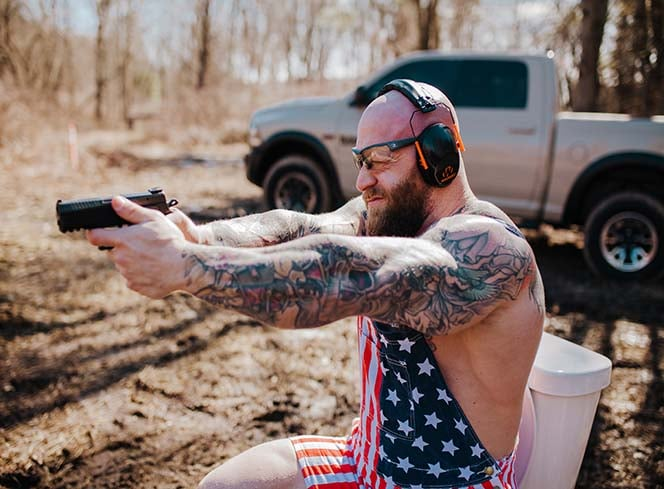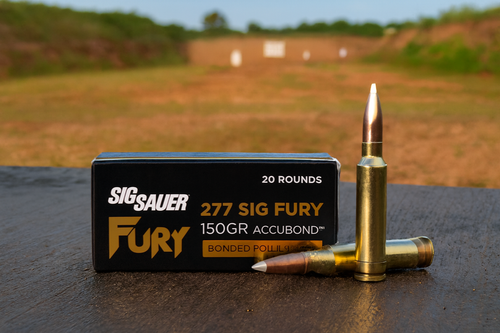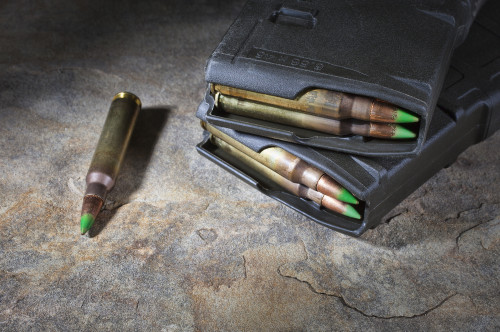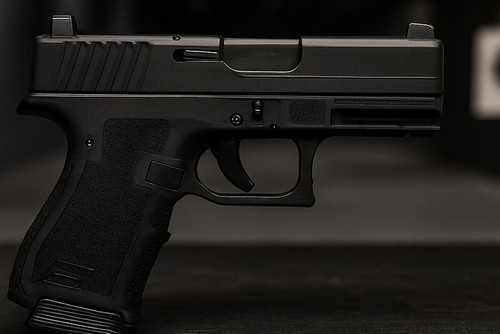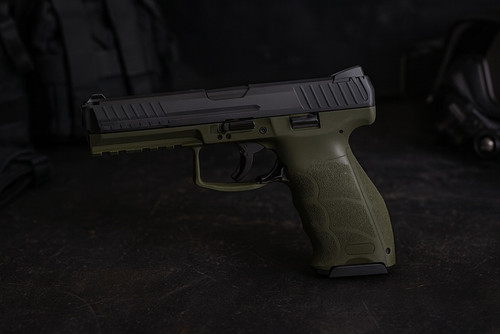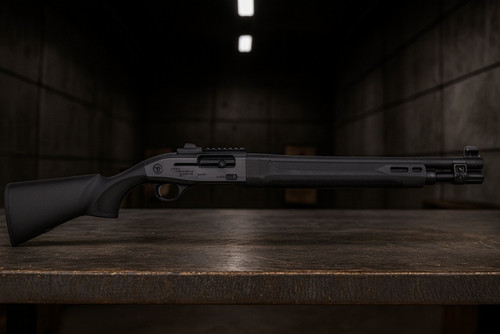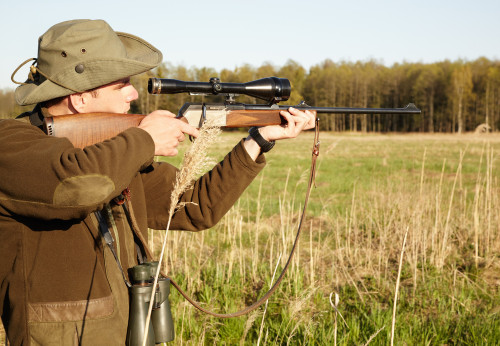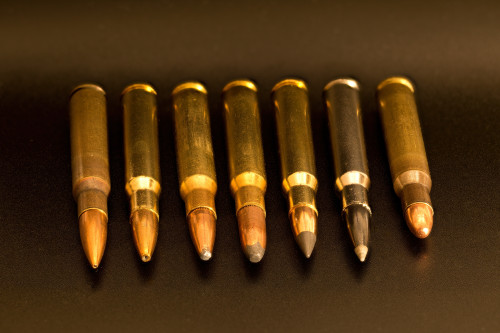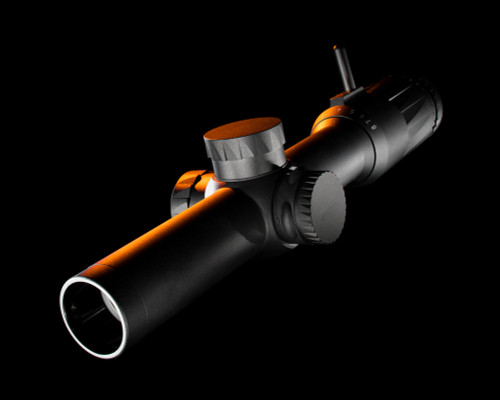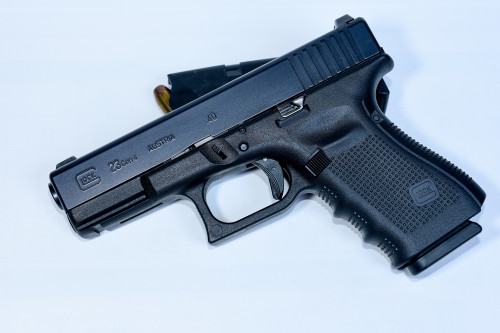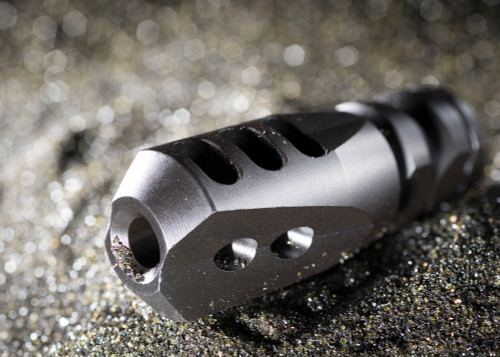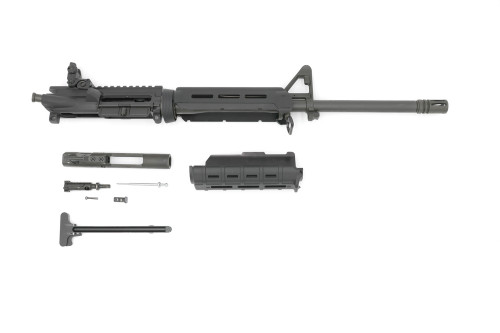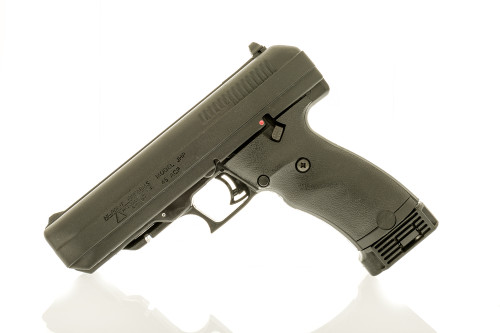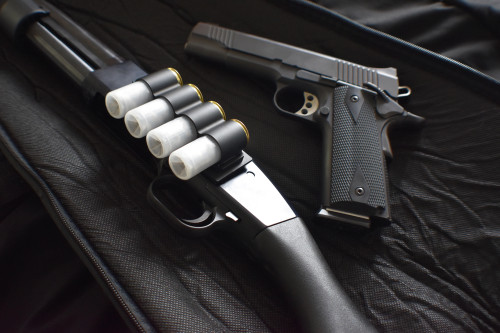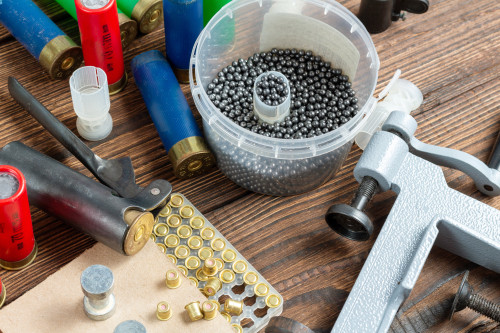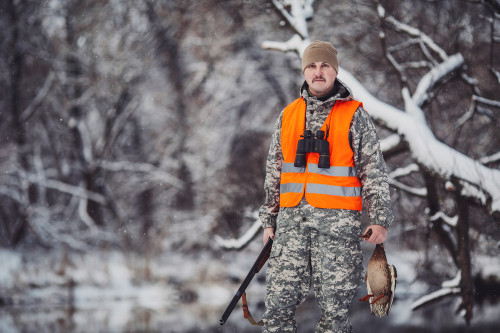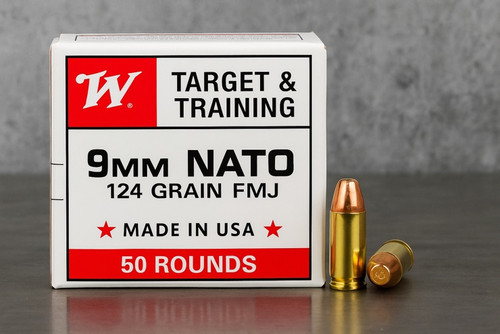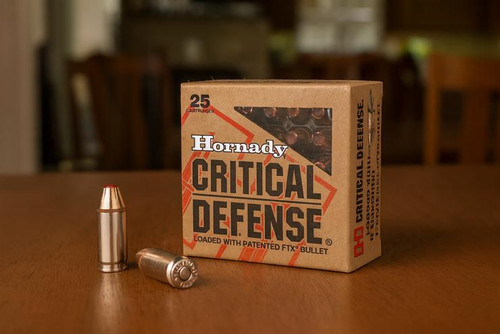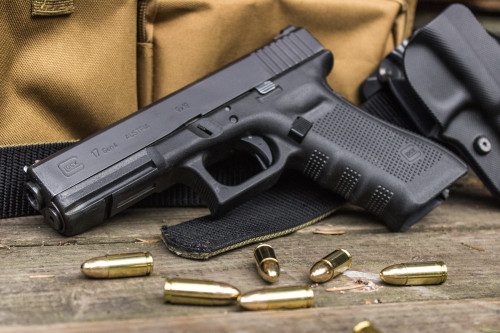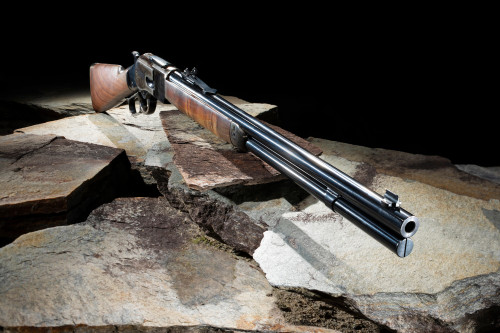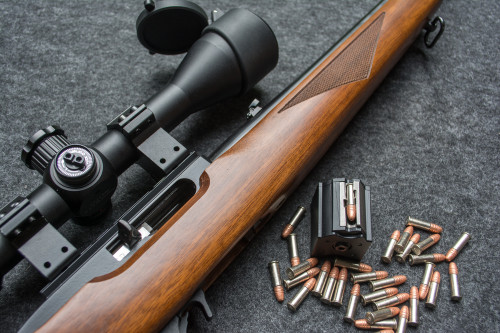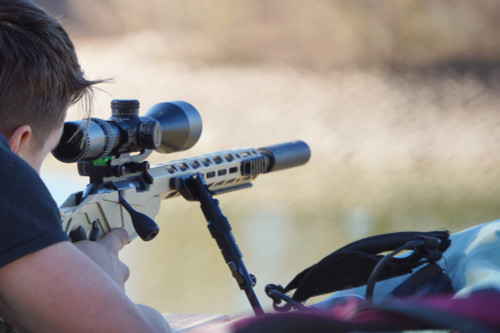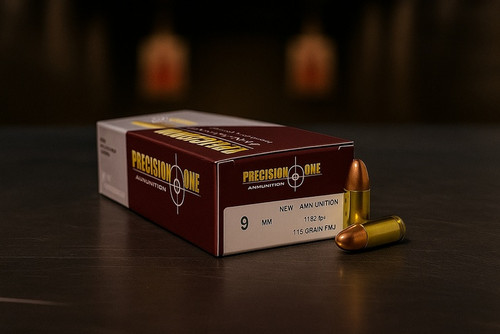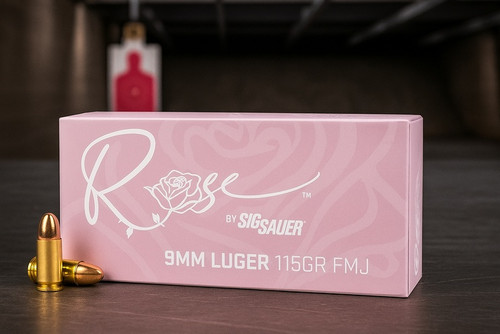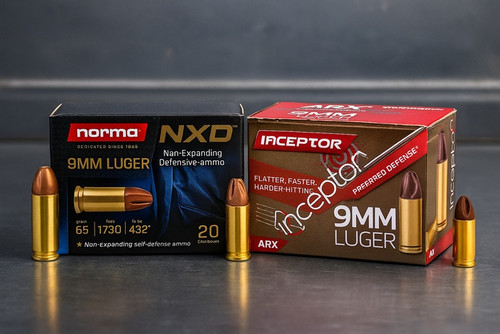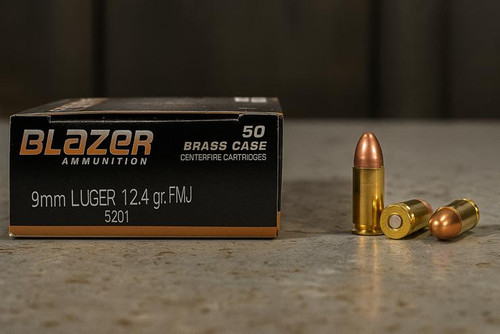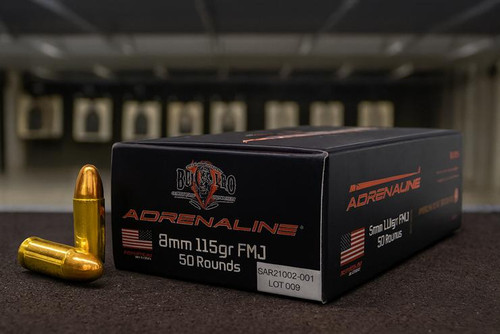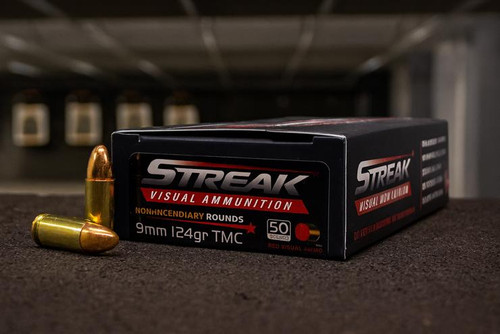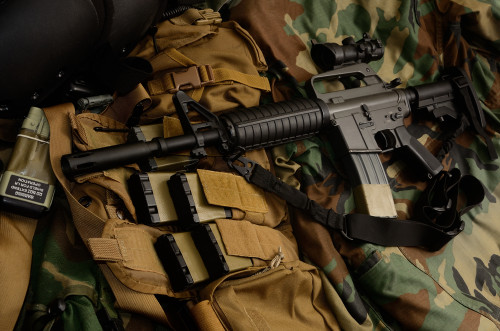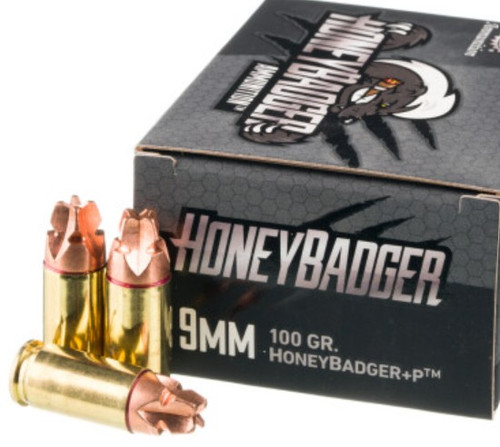The landscape of firearm accessories has experienced significant changes, particularly regarding pistol braces. These seemingly simple devices have sparked intense debate between gun owners, manufacturers, and the Bureau of Alcohol, Tobacco, Firearms and Explosives (ATF). Recent regulatory changes have transformed how these accessories are classified and controlled, creating new challenges for firearm owners nationwide.
The relationship between pistol braces and federal regulations has evolved dramatically since their introduction in 2012. What started as a helpful device for disabled shooters has become the center of complex legal battles and regulatory scrutiny. These developments have left many gun owners searching for clear guidance on compliance and their rights.
Background on Pistol Braces and the ATF
The Evolution of Pistol Braces
Innovation often springs from necessity, as demonstrated by the creation of pistol braces in 2012. SB Tactical's founder Alex Bosco witnessed a disabled combat veteran struggling to shoot at a local range. This experience inspired him to develop a solution that would change the firearms industry forever.
The first stabilizing brace addressed a crucial need in the shooting community. Its design featured a simple yet revolutionary mechanism that attached securely to a shooter's forearm using Velcro straps. This innovation enabled disabled shooters to safely operate AR-style pistols single-handedly, opening new possibilities for those with limited mobility.
SB Tactical's journey gained momentum after securing initial ATF approval. Through strategic partnerships with industry giants Sig Sauer and Century Arms, the company launched groundbreaking models like the SB15 and SB47 braces. These collaborations transformed pistol braces from specialized accessories into mainstream products within the firearms market.
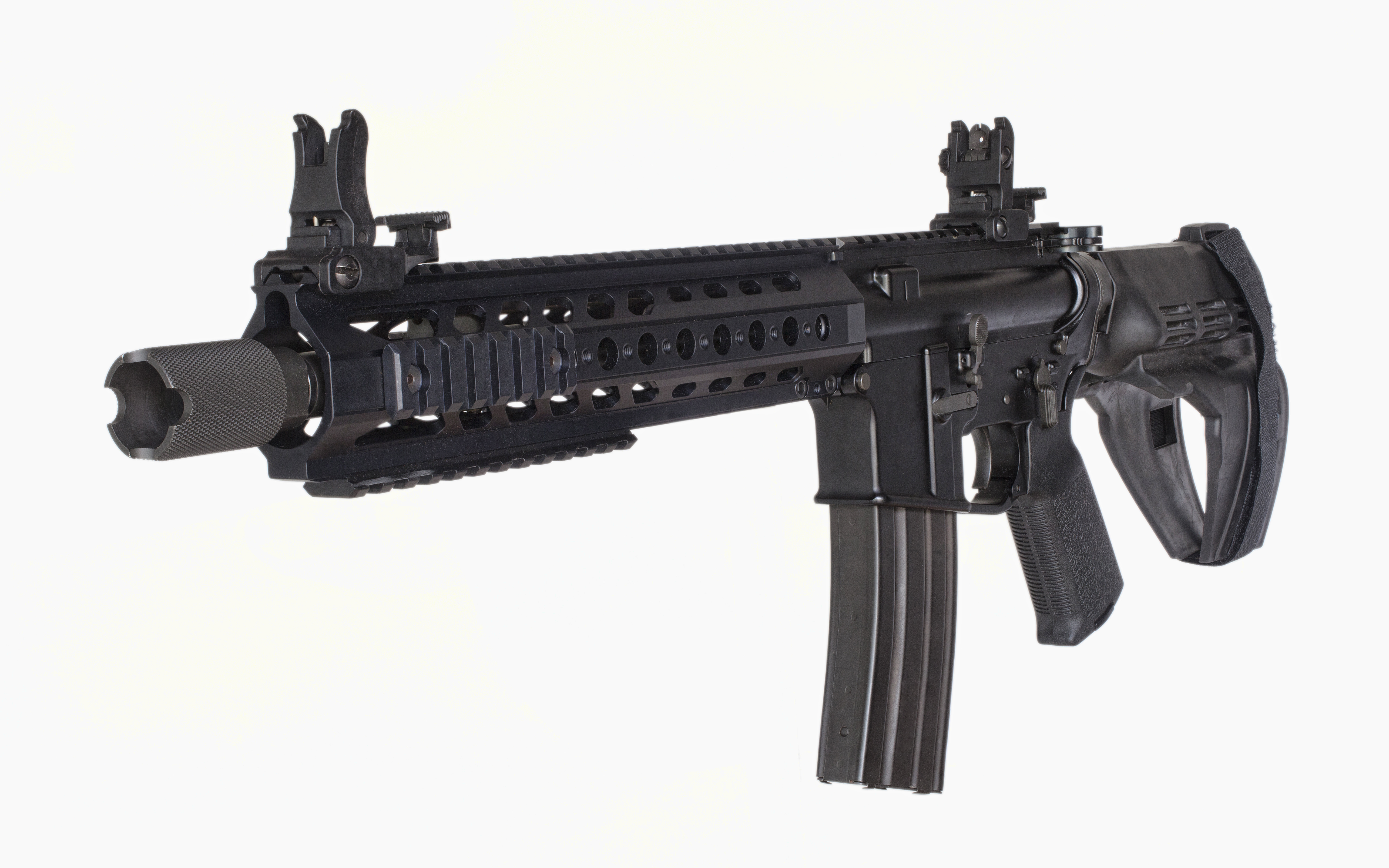
ATF's Historical Stance
The regulatory journey of pistol braces reflects a complex history of changing interpretations. In 2012, the ATF's initial approval confirmed these devices didn't transform pistols into shoulder-fired weapons. By 2014, the Bureau maintained this position, explicitly stating that shouldering a brace-equipped pistol wouldn't result in SBR classification.
A significant shift occurred just before SHOT Show 2015. The ATF published a letter reversing its previous stance, declaring that shouldering a brace would create an SBR classification. This unexpected change sparked immediate confusion throughout the firearms community, leading to widespread concern about compliance requirements.
Sig Sauer and SB Tactical mounted a determined response to this reversal. Their two-year battle with the ATF sought clarity on the sudden policy change. Success came in 2017 when the Bureau reverted to its original interpretation, confirming that shouldering braced pistols wouldn't trigger NFA restrictions.
The period between 2017 and 2020 brought relative stability to brace regulations. Gun owners enjoyed clear guidelines about brace usage without fear of NFA violations. However, this stability proved temporary as new challenges emerged in subsequent years, setting the stage for more regulatory battles ahead.
Current Legal Landscape
The Final Rule 2023R-08F
On January 13, 2023, the ATF published Final Rule 2023R-08F, introducing major changes to pistol brace regulations. This 300-page document initially redefined how firearms with stabilizing braces are classified and regulated. Originally, any firearm featuring a barrel shorter than 16 inches equipped with a stabilizing brace was classified as a short-barreled rifle. However, subsequent legal challenges have led to significant reversals of these regulations.
Clear criteria were initially set by this ruling for determining rifle classification. Surface area became a crucial factor in the ATF's evaluation process. Components providing shoulder-firing capability faced additional scrutiny. Gun owners were required to consider multiple factors, including barrel length, overall weapon length, and brace characteristics.
The ATF established specific guidelines for compliance options. Owners could permanently remove their braces or modify them to prevent reattachment. Adding a barrel longer than 16 inches served as another viable solution. Registration through Form 1 submission was mandated for continued possession under NFA regulations.
Manufacturers faced new restrictions on selling braced firearms. Separate brace sales remained legal as accessories. However, complete firearms with installed braces required proper NFA documentation and transfer procedures. FFLs were instructed to refuse shipments of non-compliant firearms or contact local ATF agents for guidance.
These measures were in effect until they were overturned by multiple court rulings throughout 2023 and 2024, notably by the Fifth and Eighth Circuit Courts. These courts deemed the ATF’s actions as overreaching, leading to a legal reversal that reinstated the legality of pistol braces without the need for NFA registration as of August 2024.
Legal Challenges and Court Rulings
June 2024 marked a significant victory for brace owners. Texas Judge Reed O'Connor's decisive ruling dealt a substantial blow to the ATF's regulations. His 12-page decision criticized the Bureau's overreach and effectively nullified the enforcement of the brace regulations. This ruling set the stage for broader challenges to federal firearm regulations.
Multiple organizations stepped forward to protect gun owners' rights. The Firearms Policy Coalition led early legal challenges against the ruling. Second Amendment Foundation and Gun Owners of America secured crucial injunctions for their members. These actions provided immediate relief for thousands of firearm owners.
In August 2024, the Eighth Circuit Court ruled the ATF's brace regulation as "arbitrary and capricious," further solidifying the legal status of pistol braces as permissible under current laws. This decision not only impacted millions of brace owners who feared potential prosecution but also substantially weakened the ATF's position on this issue.
Geographic limitations create varying levels of protection. Fifth Circuit residents enjoy stronger legal shields through specific injunctions. Members of advocacy groups received additional protections based on their membership status. State-level responses further complicated enforcement efforts across different regions.
The Department of Justice maintains its position supporting the ATF's authority. However, the series of court defeats has limited their ability to enforce the contested regulations. Appeals continue through various court systems. Supreme Court involvement remains a possibility if the federal government seeks to challenge these appellate decisions..
Overview of New ATF Regulations
Registration Requirements
Current registration requirements have been rendered obsolete due to recent court rulings. Initially, the ATF required owners of firearms with barrels under 16 inches and stabilizing braces to register them under the National Firearms Act (NFA). However, this requirement no longer applies following the court rulings in November 2023 and August 2024.
The registration process demanded specific documentation through the ATF's system. Gun owners needed to complete either electronic Form 1 or paper Form 1 applications. While some gun owners complied with the initial requirement, the latest rulings mean that those who did not register their braces are no longer required to do so.
Additional considerations apply to various firearm categories. Lower receivers with factory-installed braces still require the $200 tax stamp payment. This requirement differs from complete firearms registered during the initial amnesty period. Marking requirements remain straightforward for most firearms, as existing manufacturer information usually meets ATF standards.
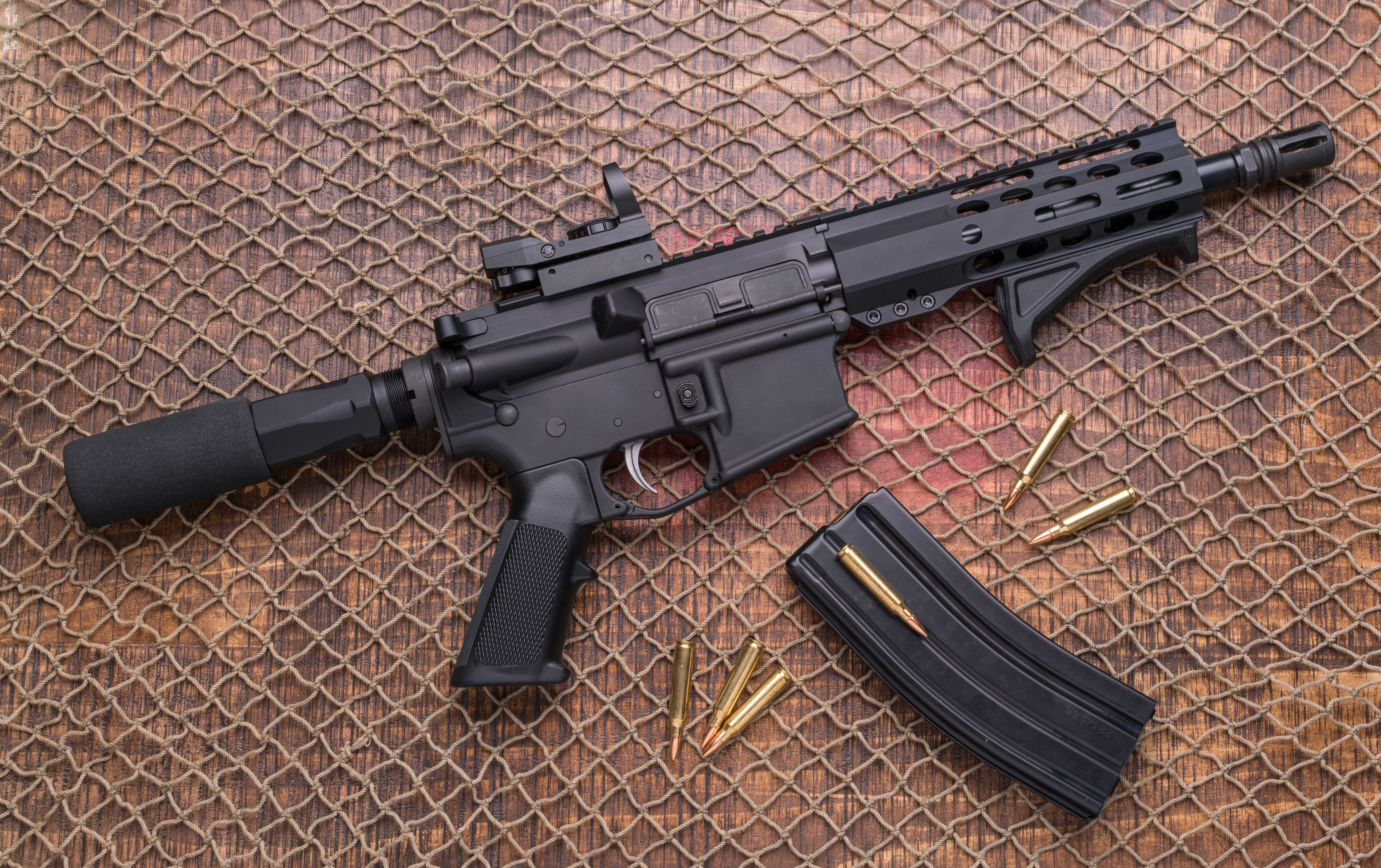
Options for Owners
Gun owners now face several paths toward compliance under these regulations. Permanent removal or modification of the brace serves as one straightforward solution. Many owners choose to install barrels exceeding 16 inches in length. This modification automatically removes the firearm from NFA classification requirements.
Registration through Form 1 submission offers another viable path forward. This process includes detailed photographs and specific technical information about the firearm. Proper documentation ensures smooth processing through ATF channels. Local ATF offices accept voluntary surrenders, though most owners prefer other compliance methods.
Federal guidelines outline specific requirements for each compliance option. Barrel modifications must meet precise length specifications. Brace alterations require permanent changes preventing future attachment. Clear photographic evidence helps document all modifications for legal purposes. Gun owners should maintain detailed records of any changes made to their firearms.
Each modification path requires careful consideration of technical requirements. Professional gunsmiths can assist with complex alterations to ensure proper compliance. Many manufacturers now offer specific guidance for their platforms. Complete documentation of modifications provides essential protection against potential legal issues.

Federal American Eagle Suppressor 300blk 220gr Ot
$27.28
at Pro Armory
Prices accurate at time of writing
Practical Advice for Firearm Owners
How to Comply with New Rules
Understanding your firearm's current configuration marks the first step toward compliance. Start by measuring the barrel length from the closed bolt face to the muzzle end. Overall firearm length measurements must include all permanently attached components. Creating detailed documentation of these measurements provides essential baseline information.
Following the recent court rulings in 2024, the ATF's registration requirements for pistol braces have been invalidated. Consequently, owners are no longer required to submit firearms with stabilizing braces for NFA registration. This significant legal shift means that detailed documentation for the purpose of ATF compliance, as previously mandated, is no longer necessary for brace-equipped firearms.
Physical modifications remain an option for personal preference or other regulatory compliance, but are no longer required under federal law to avoid NFA classification for pistols with stabilizing braces. Removing the stabilizing brace permanently or installing a barrel longer than 16 inches is no longer a legal requirement but may be considered based on individual state laws or personal configuration preferences. Professional gunsmiths can still assist with any modifications, ensuring they are executed safely and legally.
Impact on Purchasing New Firearms
Federal Firearms Licensed dealers face strict guidelines regarding braced firearm transfers. Current regulations prohibit dealers from transferring non-compliant firearms to buyers. Many dealers now require proof of NFA registration before completing transactions involving braced firearms. Some establishments have stopped carrying certain models altogether to avoid compliance issues.
Smart buyers conduct thorough research before making purchase decisions. Key measurements determine whether a firearm requires NFA registration. Barrel length under 16 inches combined with a stabilizing brace triggers additional requirements. Many manufacturers now offer compliant alternatives to previously braced models. Some companies include conversion kits to help owners maintain compliance.
Resources for Legal Assistance
Firearms attorneys provide crucial guidance through the regulatory landscape. These specialists understand both federal and state-specific requirements. Many offer consultation services specifically focused on brace compliance issues. Regular updates from legal professionals help owners stay ahead of changing regulations.

Hornady 300 BLK 190gr Sub-X
$31.02
at Pro Armory
Prices accurate at time of writing
National organizations actively track and interpret regulatory changes. Groups like the Firearms Policy Coalition maintain detailed resources for members. Second Amendment Foundation and Gun Owners of America provide regular updates on legal challenges. State-level organizations often coordinate with national groups to address local concerns.
Support services extend beyond legal consultation. Local gun shops often maintain relationships with qualified attorneys. Training programs help owners understand compliance requirements. Online communities share experiences and solutions while maintaining legal boundaries. Industry publications provide in-depth analysis of regulatory impacts and compliance strategies.
Looking Forward
Potential Future Changes
Legal challenges and legislative efforts continue to reshape the regulatory landscape for pistol braces. The current legal status of pistol braces is subject to change if the government appeals recent rulings or if new legal challenges emerge. Owners should remain vigilant and stay updated on potential Supreme Court involvement. Each state's unique response to federal guidelines has created a complex web of compliance requirements across different jurisdictions.
Market forces have pushed manufacturers toward creative solutions in firearm design. Many companies now focus on developing compliant alternatives that maintain functionality without triggering NFA restrictions. This wave of innovation has introduced several new stabilizing devices that meet current guidelines while serving the needs of shooters.
Circuit court decisions across multiple jurisdictions have set important legal precedents. These rulings may eventually lead to Supreme Court review of brace regulations. Meanwhile, ongoing constitutional challenges from advocacy groups and individual citizens actively influence how these policies are enforced at federal and state levels.
Staying Informed
Maintaining current knowledge of pistol brace regulations requires active engagement with multiple information sources. Industry newsletters and legal bulletins deliver timely updates directly to your inbox, helping you stay ahead of regulatory changes. By joining established firearms organizations, you'll gain access to expert analysis and detailed tracking of legislative developments.
Current Status: As of now, pistol braces are considered legal, and owners do not need to register them under the National Firearms Act due to recent court decisions that have affected the ATF's enforcement capabilities. However, the ATF's stance on the issue remains contentious, and further legal battles may arise. This ongoing contention underscores the importance of staying informed through reliable sources.

Magtech 5.56 NATO 62gr FMJ
$26.54
at Pro Armory
Prices accurate at time of writing
Breaking news also travels quickly through verified social media channels and professional networks. Expert discussions on industry forums provide valuable insights into regulatory interpretations and compliance strategies. These platforms can be crucial in understanding the nuanced positions of various stakeholders in the firearm industry, including legal experts, advocacy groups, and individual rights organizations.
Beyond digital resources, local gun shops serve as community hubs where owners can gather firsthand information and practical advice about evolving regulations.
Conclusion
Understanding and adapting to pistol brace regulations requires ongoing attention. The complex interaction between federal rules, court decisions, and state laws affects all firearm owners. Maintaining compliance while exercising Second Amendment rights demands careful consideration of available options.
Prominent among those advocating for the legality of pistol braces are organizations such as the Gun Owners of America (GOA) and the Firearms Policy Coalition (FPC). These groups have been at the forefront of legal challenges against restrictive regulations imposed by the ATF. Their persistent legal battles have played a crucial role in the multiple court rulings that have struck down the ATF’s attempts to classify pistol braces under more stringent regulations.
As of August 2024, pistol braces remain legal due to these court rulings striking down the ATF’s regulatory changes. The efforts of these organizations highlight the ongoing battle to preserve gun owners' rights under the Second Amendment, emphasizing the need for continued vigilance and support from the firearm-owning community. However, given the dynamic nature of firearms laws, gun owners must stay informed about any future legal developments that could impact compliance requirements. Engaging with and supporting these advocacy groups can be a critical way for individuals to contribute to the defense and preservation of their rights.
FAQs
Do I need to register my braced firearm if it has a barrel over 16 inches?
No. Due to court rulings in November 2023 and August 2024, the requirement to register braced firearms under the NFA is no longer in effect. As of now, pistol braces remain legal without additional registration requirements.
What happens if I live in a state that bans SBRs?
Residents of states prohibiting SBR ownership face limited options under current regulations. The ATF automatically denies Form 1 applications from restricted states. Owners must either remove the brace, extend the barrel length, or dispose of the firearm through legal channels.
Can I still purchase a separate pistol brace as an accessory?
The ATF continues to allow separate sales of pistol braces as accessories. However, installation must comply with current regulations regarding overall firearm configuration. Manufacturers can sell braces independently without additional restrictions.
How long does the registration process typically take?
Registration processing times vary significantly based on application volume and method. Electronic Form 1 submissions typically process faster than paper applications. The ATF maintains separate processing queues for brace-related applications but provides no guaranteed timeline.
What documentation should I maintain after registering my firearm?
Maintain copies of all registration documents, including approved tax stamps and correspondence. Photograph your firearm's configuration and keep records of any modifications. Store digital and physical copies of documentation in secure locations.
Can gunsmiths work on my braced firearm during the registration process?
Gunsmiths cannot accept non-compliant firearms for work until proper registration or modification. Once registered or brought into compliance, normal gunsmith services resume. Maintain documentation of compliance status when seeking gunsmith services.
What happens if I receive a braced firearm through inheritance?
Inherited firearms with braces must meet current compliance requirements before taking possession. Contact a firearms attorney immediately to discuss registration options. The ATF provides specific guidance for transferring NFA items through inheritance, including required documentation and timelines.
Are there exceptions to the brace regulations for disabled shooters?
The ATF's current regulations do not provide exceptions for disabled shooters. All firearms with braces must comply with the same requirements regardless of the owner's disability status. Medical documentation does not exempt firearms from NFA classification under these rules.
Can I travel across state lines with my registered braced firearm?
Interstate travel with registered braced firearms requires advance ATF approval through Form 5320.20. Submit these forms at least 30 days before planned travel. Different states maintain varying regulations regarding NFA items, making research of local laws essential.
What happens if my registration application gets denied?
Denied applications require immediate action to maintain compliance. Owners must either remove the brace, convert the firearm to a compliant configuration, or surrender it to authorities. The ATF provides written explanations for denials, allowing owners to address specific issues in future applications.



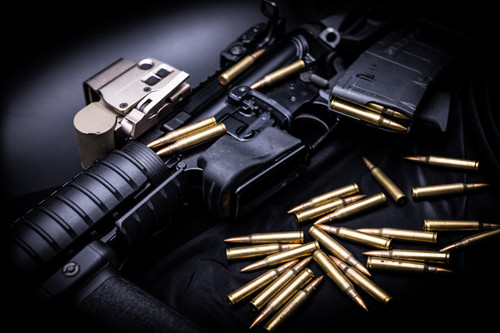
 Pro Armory Editorial Team
Pro Armory Editorial Team